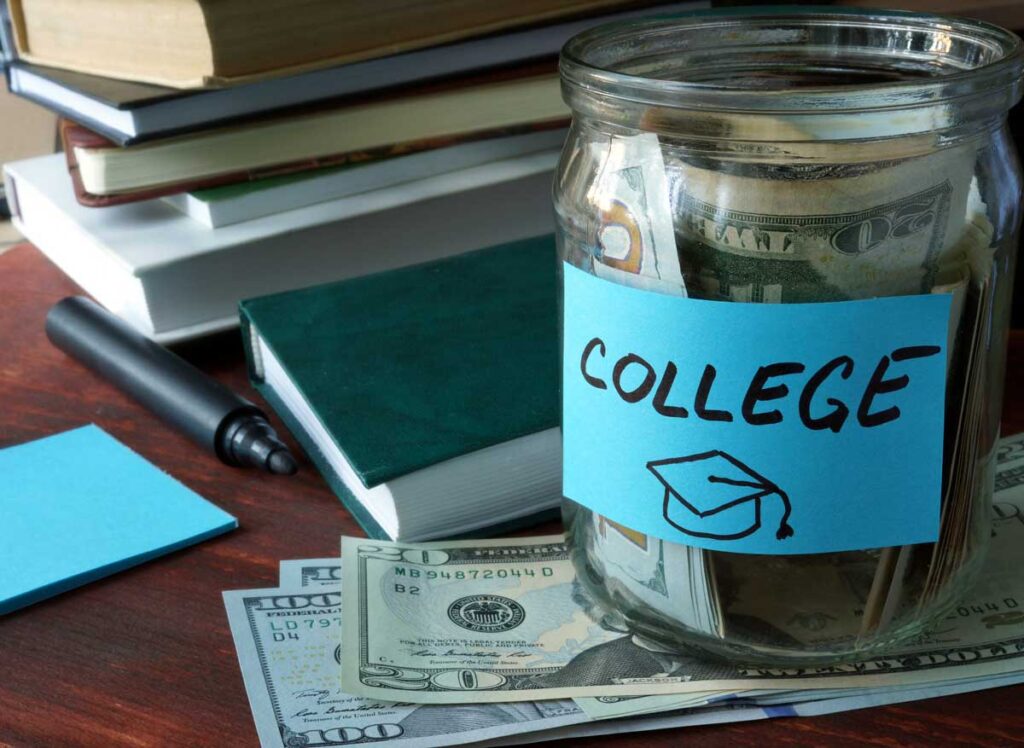In the April 2021 online issue of The Atlantic, Caitlin Flanagan’s article “Private Schools Have Become Truly Obscene” has elicited some competing responses. If the title alone was not jarring enough, the subtitle “Elite schools breed entitlement, entrench inequality – and then pretend to be engines of social change” clearly indicates the points to be made by the writer.
Ms. Flanagan begins her article with a story about the Dalton School in Manhattan, one of America’s most elite (and expensive) private schools at $54,000 in tuition per year. Evidently, the new head of school decided that Dalton would not hold in-person classes in the fall. That decision did not go over well with Dalton parents, given that the other elite private schools in Manhattan were opening.
Among the emails sent to the school head was one from 20 physicians whose children attended Dalton. They asked what the specific criteria would be for reopening the school, particularly since peer schools are thriving by opening. A signed petition was received from 70 parents of children in the Lower School, asking for the school to reopen since their children’s friends at other private schools were attending in-person classes.
Ms. Flanagan then posed the question, “Why should taxpayers be expected to support private schools?” She mentions Philip Exeter Academy’s 1,100 students and its $1.3 billion endowment as well as Andover Academy’s 1,150 students and its current $400 million capital campaign. Taxpayers subsidize these private schools by allowing donors to deduct their contributions, and the schools receive the vast sums of money tax-free.
Students at these private schools are surrounded by an embarrassment of riches in terms of luxurious facilities and advanced curriculum. Only two percent of U.S. K-12 students attend private schools.
However, 24 percent of Yale’s freshman class, 25 percent of Princeton’s freshman class, 29 percent of Brown’s freshman class, and 29 percent of Dartmouth’s freshman class attended private schools. If that wasn’t enough, the most elite of the nation’s 1,600 independent schools contribute the greatest share of students to the nation’s elite colleges and universities.
Ms. Flanagan observes that these schools are not engines of equity and inclusivity. At $50,000 per year, they are a luxury for the rich. If the schools truly cared about equity, they should close up shop. In a just society, there wouldn’t be a need for private wealth to subsidize something as fundamental as an education.
The author further states that we’ve allowed the majority of our public schools to founder, while private schools play an outsized role in determining who wins. Public schools are broken, according to Ms. Flanagan.
She writes that in her state of California, only half of public-school students are at grade level in reading and fewer in math. Ms. Flanagan also asks if the nation’s best schools should be the schools that serve poor children versus the rich.
There are a number of stories dispersed throughout this article that I chose not to describe in the interest of brevity. Early in her career, Ms. Flanagan taught at one of the elite private schools in Los Angeles.
Back then, wealth wasn’t as visible at the school and parents weren’t as demanding as they are now. She thought of schools as transformational. Ms. Flanagan even sent one of her sons to the same private school at which she taught.
It is not surprising to me that Ms. Flanagan provided so many rich and personal stories about private schools. The largest of private schools might have the same number of children attending K-12 or 9-12 as our public high schools have in 9th grade. The lower enrollment, lower teacher-to-student ratio, and small, close-knit school community provides experiences that are easy to remember.
Many years ago, I was one of those “lottery winners” who received a full scholarship to attend one of the top private schools in Baltimore. The educational experience gave me the lift to be admitted at elite colleges as a scholarship and financial aid student. Those colleges in turn led to great job opportunities, a successful career, and the chance to give back to the school that gave me my opportunities.
Ms. Flanagan makes many good points in her article. At the same time, her negativity seems a bit jaded.
The private school that I attended is not considered to be in the same elite category as the ones that she describes. It has a percentage of its graduates who attend top 100 colleges and universities and yet the college where the largest number of graduates from the school attend each year is the flagship campus of the University of Maryland. Nonetheless, tuition per Upper School student for next year is listed at $34,700, a sum out of reach for all but the wealthiest families in the Baltimore area.
The problems outlined by Ms. Flanagan are many and are deep-seated. If she, or anyone else for that matter, had the ability to wave a wand and erase private schools, I don’t think the issues of education access, diversity, and inclusion would go away.
The wealthy would most likely hire tutors or send their children to schools out of the country. Her examples of the percentages of the freshman class at elite private schools who attended independent schools ignores a simple economic fact – those colleges charging upwards of $70,000 per year need a source for full-pay students, and the likeliest source is from families accustomed to paying for private school.
Additionally, there will always be parents who believe that the mass education curriculum offered by many school systems does not provide their children with the education and intellectual stimulation needed to match their potential. These parents know that our K-12 educational system has multiple branches and reaching the top branch is nearly impossible if you waste a year or two or three at a school that cannot provide adequate instruction and curriculum.
These parents are not limited to the top one percent socioeconomically. When these parents can’t find a magnet school in the public school system, they look for affordable private schools or charter schools or relocate when possible to gain access to a top-rated public school.
I agree with Ms. Flanagan that our public school system needs to be fixed. But I don’t agree that it’s broken.
I think many public schools are handicapped because they are forced to do too many things out of a single box location. Every time they try to group by ability or specialize, they are criticized for leaving others out. Fixing the system isn’t impossible, but it will take a unified coalition of educators, parents, and policymakers years to make the changes needed to ensure that all of our children attending public schools receive the educational opportunities that children in independent schools do.
Years ago, I was asked to be a board member at my private school alma mater. At the time, I was the only board member who had attended the school as a scholarship student (or lottery winner as Ms. Flanagan describes it).
In our strategic planning discussions, we had a healthy discussion about ways in which we could increase economic and racial diversity. Raising money for more scholarships only partially solved the problem due to the school’s fixed capacity for a specific number of students, and there was a growing problem with no ability to accommodate middle-class families who could not afford the school’s tuition.
I suggested that the school sponsor a charter school in Baltimore City, sharing curriculum, faculty, and wealth. Doing that would be more impactful than adding a few more scholarships.
However, I was told that the idea would never be embraced by “Baltimore City’s leadership.” I was never sure if that was an accurate response or a way for the school head to say that he didn’t have the time or desire to pursue the idea.
We also don’t have to search the independent school universe to find examples of great schools. A friend and classmate of mine from Duke started her career in the Florida public school system as a special education teacher. She was identified as someone with leadership potential and was promoted to assistant principal and then principal.
For approximately 30 years, my friend served as a principal at four different schools. Only one of those schools was in an economically privileged area.
But at all of those schools, she was able to improve student outcomes as measured by test scores and by the Florida system’s ratings. Now retired, she serves as a mentor to new principals. If I was a school superintendent with a charge to improve the system, I’d form an advisory group of current and retired star principals and teachers and ask them for recommendations for improvements.
Lastly, our local chambers of commerce should examine their commitment to seeing that their local public school systems receive adequate funding in order to achieve excellence. Not only is it good business to ensure that the children of your employees receive a great education, it’s also good business because well-educated children grow up to be better future employees, customers, business owners, and professionals. Any extra business taxes paid to ensure adequate funding of the local schools has an infinite return if they’re invested wisely.
If there is a unifying theme among Americans, it’s that we all want our children and grandchildren to have an educational experience that prepares them for life. Because education occurs during our formative years of development, the stories of our journeys are personal and impactful.
My father never attended college, yet he insisted that all four of his children attend and graduate from college in order to have a life better than his own. He and my mother worked long hours and multiple jobs to provide us with whatever we needed for school, and consequently, never had the time to attend our athletic events.
At the same time, they made the time to attend academic awards ceremonies and graduations, not just for their children, but for their grandchildren and great-grandchildren. Education was the great equalizer in my parents’ minds, and my dad wanted to make sure his family knew it.
We need solutions, not roadblocks. We need commitments, not ignorance. Solutions won’t happen overnight, but if we can agree on a common goal, then collectively, we can get there.
Rather than eliminating the independent schools where children of the privileged (including many of our politicians on both sides of the aisle) attend, we should ask them to demonstrate their worthiness for tax-free status by contributing time, money, and solutions to their local public schools. If we believe our public schools to be broken, we should hold open and productive discussions with their leaders to find out what and where their needs are, find funding solutions, and hold them accountable for the implementation of those solutions and better outcomes. We have to stop the political infighting among various factions in the education community and work to create practical, realistic solutions for students.











